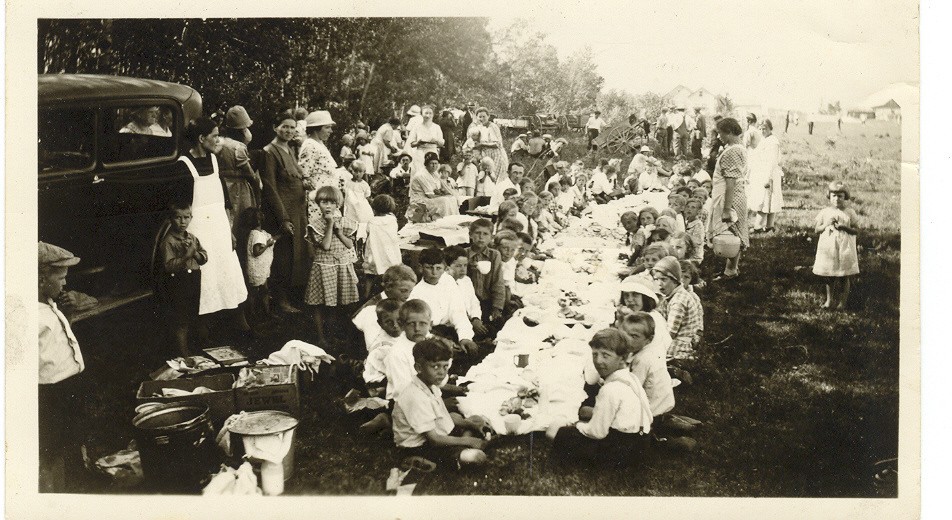COLUMN: Tales from the Gravel Ridge – Why remembering matters to me
Advertisement
Once upon a time there was a one-roomed schoolhouse, built in a prime location, right next to a gravel ridge. This building was of sturdy frame construction, and had a concrete foundation. Its cream coloured siding was complemented by a dark shade of burgundy trimming.
The large windows along one wall faced the western sun in the late afternoon, and two smaller ones, near the ceiling, let in easterly breezes. To open these latter ones required the use of a long pole, specially designed with a hook that fit into the latching mechanism of the window. With the proper motion, these windows could be readily opened.
In my imagination, I peer through one of those large windows, and take in all the details of the room before me. The desks, arranged in straight rows, are sturdy, even after having served as school furnishings for many years. The ridges on each desktop were designed to hold pencils and pen holders, the latter being fitted with steel nibs. The inkwells have been designed to hold bottles of ink, which in this case hold Waterman ink.

The blackboards that are attached to the northern and the eastern walls of the building are clean, and the felt brushes too have been beaten together until most of the chalk has escaped into the air.
Attached to the northern wall, just above the blackboard, are two maps rolled up on dowelling, equipped with a spring-loaded mechanism, so that they can be readily lowered and retracted. One is a map of the world, showing the British Empire in pink, and the other is a map of Canada.
At the front of the room is the teacher’s desk. It can hardly be called a desk, and is more like a table. In the corner is a supply cabinet with glass doors at the top, and a cupboard at the bottom.
There is a large stove in one of the back corners of the room, and on any winter day a roaring fire within it helps to keep the classroom warm. Nearby, right next to the exit, is the bucket holding drinking water.
One other significant piece of furniture completes the picture. In the back corner, opposite the stove, is the bookcase containing the library books. The school was greatly enriched by this resource, limited though it was.
As I gaze fondly at the imaginary sight before me, I wonder which one of these pieces I would salvage, if I were given one choice. When all is said and done, I think the library bookcase would have to be my choice, especially so if some of the old books came with it. I cannot think of any greater treasure from this schoolhouse.
The Rosengard School ceased serving its community in that capacity in 1968, and I have none of the artifacts of that era. What I do have, however, are priceless memories of the years I spent as a student in that school. These don’t require repairing and polishing as artifacts would, nor do they take up space in our house. Indeed my memories remain strong and unblemished. In addition to that, I am free to peer in at the window whenever I choose, and I’ll always be sure to come up with recollections of my days at the Rosengard School.
It is important for me to remember the old schoolhouse for countless reasons. It was here that I, as well as my siblings, received our introduction to formal education. By virtue of the structure of the school day, along with the discipline that was part of our education, we were being prepared for life in the wider world. It was here too that we established long-lasting friendships.
To my mind the school also served to unite the community in various ways. It was a venue where groups, large and small could gather, be it for school events, religious services, or more private occasions such as funerals. For all of this, it is important for me to remember.
